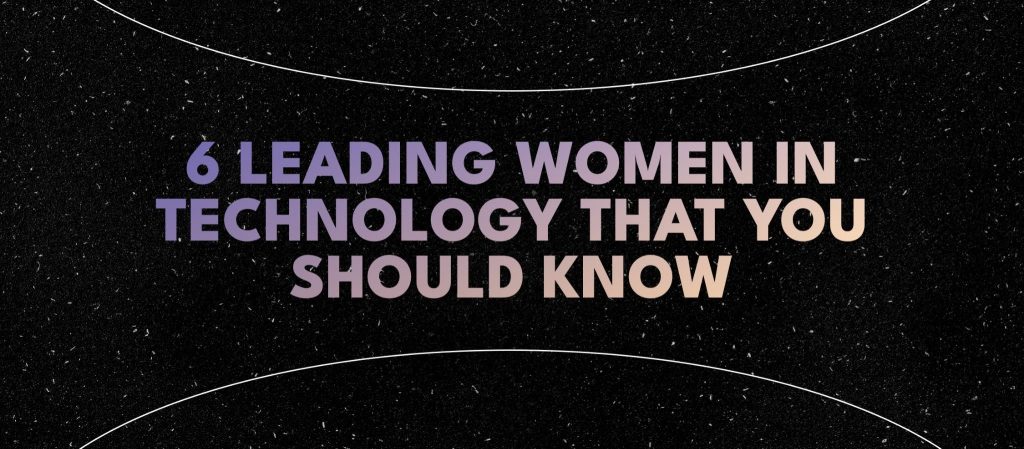
Ada Lovelace (1815-1852)
During her studies, she interned for Charles Babbage, the inventor of the digital computer. In 1845, leveraging Babbage’s powerful invention, she designed a language capable of describing algorithms, thus creating the first programming language.
As a curiosity, she had to sign all her work with the initials A.A.L. for fear of censorship due to being a woman.
Susan Wojcicki (1968-Present)
Like all great technology companies, their beginnings are found in some good garage, and Google had to build on this cliché. However, few people know that this garage belonged to Susan Wojcicki. Despite not having a background in technology, she has always been interested in it and has recognized the potential of this sector.
She has been a key person in Google’s success, overseeing platforms as important as Google Ads, Google Analytics, or Google Images for 12 years, among others. Also, when the company was barely a year old, Susan convinced Google’s founders, Page and Brin, to acquire YouTube. She is currently the CEO of YouTube and was named by Time magazine as one of the 100 most powerful women in the world.
Ángela Ruiz Robles (1815-1852)
Her innovative and transformative spirit applied to education led her to create in 1949 what she called the “mechanical, electrical, and air pressure procedure for reading books.” With this invention, she managed to condense maximum knowledge with minimal effort through transparent sheets illuminated by a button. This book also modestly represented the first hypertext link. Similarly, in 1962, she patented her Mechanical Encyclopedia, considered the precursor of the e-book.
Safra Catz (1961-Present)
She is the CEO of Oracle. Described by Fortune magazine as a woman of “low profile, but high impact” and included on numerous occasions in Forbes magazine’s ’20 Highest Paid Women CEOs in the World’ list, with a fortune valued at $525 million. A former Wall Street banker and mother of two, she was recruited by Oracle in the 1990s and named CEO in September 2014, where she will remain in the CEO position permanently and alone.
Hedy Lamarr (1914-2000)
In 1941, in the midst of World War II, Lamarr wanted to contribute her knowledge to the Allied side to defeat the Germans in the so-called “Blitzkrieg.” For this purpose, she devised frequency hopping spread spectrum, an invention that allowed long-distance wireless communications, which are now used to operate systems as important as Wi-Fi, GPS, and Bluetooth. She also invented a system capable of remotely controlling torpedo steering.
Julie Sweet (1966-Present)
She is the CEO of Accenture. She is listed as one of the 50 most powerful executives in the world, according to Fortune magazine. Sweet, a law graduate from Columbia Law School, a graduate of Arts from Claremont McKenna College and the mother of two girls, became the first woman to be named CEO of Accenture in 2019, specifically, she heads the business of Accenture in North America, the firm’s largest market, representing around half of the company’s revenue.
Margaret Hamilton (1936-Present)
The most important milestone in Margaret’s career was when she led the “Apollo Program,” where she was responsible, along with her team, for designing the spacecraft’s software. Thanks to her contribution, she prevented the mission from failing because the software she devised was programmed to prevent errors and prioritize fundamental systems for the spacecraft’s operation, thus avoiding overload and successfully completing the mission; Apollo XI reached the Moon and three men took the spotlight: Neil Armstrong, Michael Collins, and Buzz Aldrin.
Radia Perlman (1951-Present)
Perlman’s main contribution to technology was the creation of the spanning tree protocol, one of the most important components of the Internet’s operation. She was also one of the first to take an interest in teaching programming to girls and boys.
She worked at Intel where she obtained more than 47 patents.
Whitney Wolfe Herd (1989-Present)
She is the founder of Bumble. At 31 years old, Wolfe Herd has been declared by Forbes as one of “the 100 richest self-made women” and has just become the youngest woman to be part of the select group of the 500 richest people in the world who They have acquired their fortune through work, a list in which women only represent 5%, according to Bloomberg data.
Ruth Porat (1957-Present)
She is the Chief Financial Officer of Alphabet Inc. and its subsidiary Google. She studied Economics at Stanford University and is a well-known incubator of renowned figures in the technological world, mainly in Silicon Valley. Married and mother of three children, she has extensive experience in the financial world. In 2019, Porat was listed as the 19th most powerful woman in the world by Forbes and 7th on Fortune’s ‘Most Powerful Women in 2020 List’, the same year that Blackstone Group Inc. named Google CFO Porat as a member. of its board of directors.